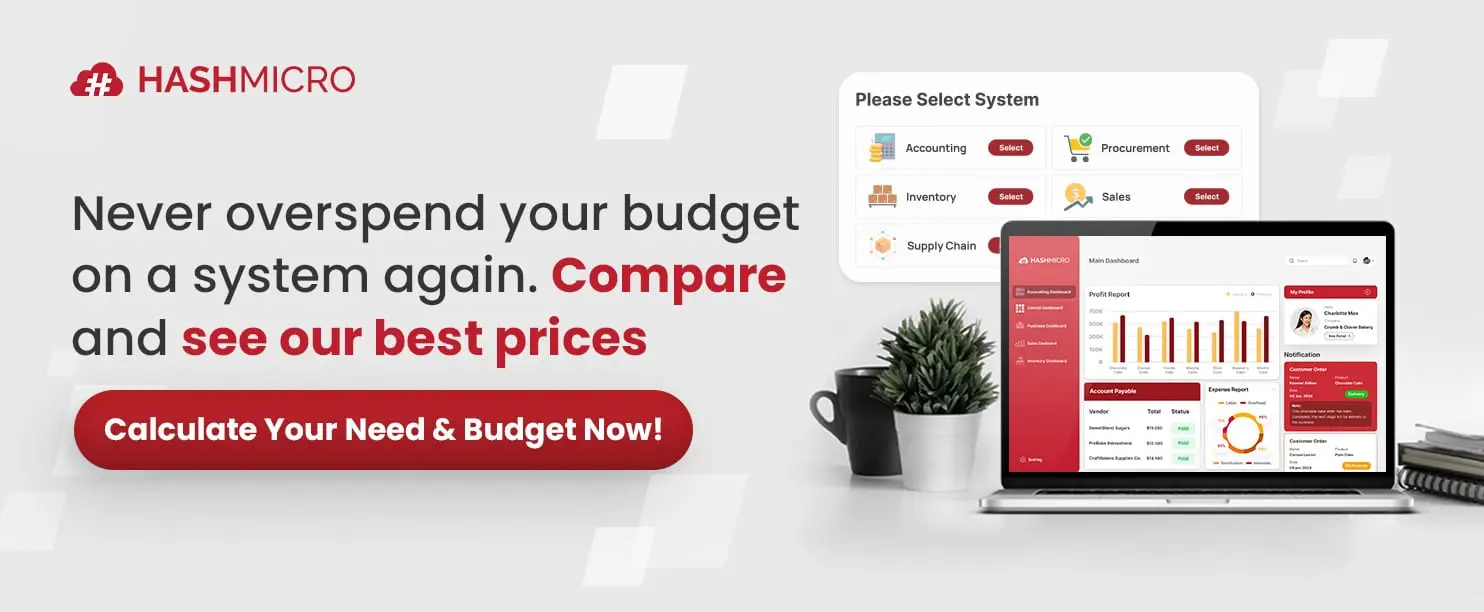Managing your income statement manually might seem manageable at first, but as your business grows, the task quickly becomes overwhelming. What was once a simple process of tracking sales and expenses soon turns into hours of error correction and formula adjustments.
Many businesses face the challenge of inaccurate data entry and inconsistent formatting when manually creating income statements. As transactions increase, keeping up with complex financial data and ensuring compliance with tax regulations can turn into a daily struggle, leading to costly mistakes.
According to a study by SME Corporation Malaysia reveals that 72% of businesses in Malaysia struggle with manual financial reporting, resulting in delayed tax submissions and missed opportunities for optimization.
This article will walk you through the importance of a well-prepared income statement, including how to analyze it, and how HashMicro Accounting Software can simplify the process, saving you time and reducing errors. Keep reading to discover how software can transform your financial management!

Key Takeaways
|
What is an Income Statement?
An income statement is a vital financial report that businesses use to track their revenues, expenses, and overall profitability during a set period. Also known as the profit and loss (P&L) statement, it provides insights into the company’s operations, revealing how well the management is performing and highlighting areas that may need improvement.
This financial document shows the revenue generated from selling goods or services and outlines the expenses incurred in the process. After deducting expenses, the income statement reveals the net income (or profit), which indicates the business’s ability to generate profits while managing costs effectively.
As one of the three key financial statements, along with the balance sheet and cash flow statement, the income statement offers a clear view of a company’s financial performance. It can be prepared for different timeframes, such as annual, quarterly, or monthly, providing valuable comparison points for businesses to assess their growth and performance.
What are the Main Parts of an Income Statement?
The income statement is an essential tool for assessing a company’s financial performance. It provides an overview of key financial metrics, including revenues, expenses, and profits, which are crucial for making informed business decisions.
Although the specific format of an income statement can vary depending on regulatory requirements and business scope, certain key components remain consistent across all formats.
1. Operating revenue
Operating revenue is the income a company generates from its core business activities. For example, in manufacturing or retailing, this refers to the income earned from the sale of products.
Similarly, service-based businesses earn operating revenue from the fees they charge for providing services. This revenue is vital for assessing a company’s ability to generate profits through its primary business operations.
2. Non-operating revenue
Non-operating revenue refers to income generated from secondary or non-core activities, and it often occurs on a recurring basis. Examples include interest earned from business funds in the bank, rental income from leased property, or royalty payments from strategic partnerships.
This revenue type provides additional financial support to the business but is not directly tied to its main revenue-generating activities.
3. Gains
Gains represent profits earned from non-recurring, one-time activities, such as the sale of long-term assets. For example, if a company sells a property or an old vehicle, the income from that sale would be recorded as a gain.
It is important to distinguish gains from regular revenue, as they come from one-off events rather than ongoing business activities. Understanding these gains helps businesses assess their financial flexibility and the impact of non-operating activities on overall profitability.
4. Primary-activity expenses
These are costs directly associated with earning operating revenue from a company’s core activities. Common primary-activity expenses include the cost of goods sold (COGS), selling, general, and administrative (SG&A) expenses, as well as research and development (R&D) costs.
These expenses reflect the day-to-day operations of the business, such as employee wages, utilities, and transportation costs, and are crucial for evaluating how efficiently a business is operating.
5. Secondary-activity expenses
Secondary-activity expenses are costs incurred from non-core business functions, such as interest paid on loans or one-time legal fees. These expenses may occur periodically or as part of an exceptional circumstance.
While not directly tied to the primary business operations, they still influence a company’s overall financial health and profitability.
6. Losses as expenses
Losses are recorded as expenses when a company incurs a financial setback, such as from the sale of long-term assets at a loss or unexpected one-off costs, like lawsuit settlements. These are unusual expenses that impact a company’s bottom line.
Businesses need to understand and account for such losses to ensure they don’t significantly affect overall financial performance and long-term sustainability.
How Do You Analyze Income Statements?
Analyzing an income statement helps you assess the financial health and performance of a business. By examining key components like net income, revenue, and expenses, you can gain valuable insights into profitability and operational efficiency.
Here are the main ways to analyze an income statement effectively:
- Bottom line: Start by examining the net income to determine whether the company is profitable. If net income has been growing, it’s a sign of positive financial health, but it’s also essential to calculate and compare the net profit margin to understand how efficiently the company turns revenue into profit.
- Vertical analysis: Vertical analysis involves calculating each line item on the income statement as a percentage of total revenue. By doing this, businesses can see how each expense, such as cost of goods sold (COGS), impacts profitability, highlighting areas that might need improvement.
- Time series analysis: This approach compares income statement items across multiple periods, whether yearly, quarterly, or monthly. By analyzing year-over-year trends, you can identify patterns in profitability, expenses, and revenue, helping to forecast future performance and refine business strategies.
- Notes to the financial statements: Always review the accompanying notes to the financial statements, as they provide essential context for interpreting the figures. These notes often include key assumptions, accounting methods, and details about the statement of income that help clarify the meaning behind the numbers.
By performing these analyses, you can better understand how well the company is managing its resources and whether it’s meeting financial goals. To make the process smoother and more accurate, consider using accounting software instead of relying on spreadsheets—this reduces the risk of errors and helps ensure that the financial statement is consistent and reliable.
What are the Uses of Income Statement?
An income statement is a vital financial tool with various applications, both externally for investors and creditors, and internally for management and executives. It provides critical insights into a company’s profitability, operational efficiency, and financial health.
Let’s explore its main uses:
1. Investors
The income statement serves as a key document for investors, offering detailed information about a company’s profitability and operations. By examining revenue, costs, and net income, investors can evaluate the company’s financial health and compare its performance against other companies or industries.
For example, if an investor is considering where to allocate capital, the income statement example offers a clear snapshot of how effectively the company is generating profits. This enables investors to make informed decisions about potential investments.
2. Management
For company management, the income statement provides valuable insights into how well the business is performing. It highlights the primary revenues and expenses that indicate the company’s success in its core operations, while secondary income streams, such as rental earnings, reveal how well the company is managing its non-core activities.
For instance, if income from interest significantly exceeds sales income, it may suggest the company isn’t fully utilizing its assets. Using these insights, management can make decisions such as entering new markets, optimizing assets, or even discontinuing unprofitable departments.
3. Creditors
Creditors primarily focus on a company’s future cash flows rather than past profits, but they still use the income statement to assess performance over time. By analyzing the income statement over different periods, creditors can evaluate whether the company is reducing costs effectively or managing operating expenses without sacrificing profitability.
This helps creditors determine the likelihood of the company meeting its financial obligations. For example, if a company consistently improves its profit margins, creditors might be more inclined to extend credit, believing in the company’s ability to generate future revenue.
In summary, the income statement is essential for various stakeholders to assess a company’s financial performance and make informed decisions. Whether you’re an investor evaluating financial statements, a manager optimizing business strategies, or a creditor analyzing future cash flows, the statement of income plays a crucial role in shaping business decisions.
Income Statement Structure
The income statement structure is essential for providing a clear view of a company’s financial performance, detailing revenues, expenses, gains, and losses. This format helps businesses and stakeholders evaluate profitability by calculating net income, as illustrated through the example of a specialty electronics store in Malaysia.
To calculate net income, we begin with total revenue, which includes sales of products and services, and subtract the associated costs. For instance, the electronics store earned RM 48,000 in revenue but spent RM 16,000 on procurement, rent, and wages, resulting in a net income of RM 33,800 after factoring in gains and losses.
When preparing an income statement, businesses can choose between a single-step or multi-step income statement format. A single-step income statement is simpler, where total revenue and gains are added, and expenses and losses are subtracted, while the multi-step format provides more detailed information.
It breaks down profitability into levels like gross profit, operating profit, and net profit, offering more profound insights into the company’s financial health, commonly used by larger companies with more complex operations.
Examples of Income Statement
Below is an example of Meta’s consolidated income statement, providing a financial overview of the company’s performance from 2022 to 2024. This breakdown highlights the key sections of the statement of income and their significance.
- Revenue: Meta’s revenue represents the money earned from its core business activities, primarily advertising. The company has experienced steady revenue growth, especially in 2024, driven by advertising, with a smaller portion coming from non-advertising sources like Reality Labs, which focuses on AR/VR.
- Costs and expenses: Costs and expenses are necessary to generate revenue and include several categories. These include cost of revenue, research and development (R&D) expenses for innovation, marketing and sales costs for promoting Meta’s products, and general and administrative expenses for business management.
- Income from operations: Income from operations, or operating income, is calculated by subtracting total costs and expenses from revenue. It reflects Meta’s profitability purely from its core business, excluding any non-operating income or expenses.
- Interest and other income (expense) net: This section reflects income or expenses from non-operating activities, such as interest from investments or expenses from debt. Positive values indicate income from these activities, while negative values show expenses that reduce profitability.
- Income before provision for income taxes: This figure represents Meta’s total income before tax deductions, combining both operating income and other income/expenses. It offers a comprehensive look at Meta’s profitability before considering tax expenses.
- Provision for income taxes: The provision for income taxes shows the estimated tax expense based on the income before taxes. Meta’s tax expense fluctuates depending on its profitability and tax planning strategies, affecting the company’s overall financial position.
- Net income: Net income, or profit, is the final amount remaining after all expenses and taxes have been deducted. Meta’s net income has been increasing, indicating strong financial performance, particularly through 2024.
- Earnings Per Share (EPS): EPS measures profitability on a per-share basis, offering insight into how much profit is generated for each share of stock. Meta provides both basic EPS and diluted EPS, with both figures rising, indicating improved returns for shareholders.
- Segment information: Meta provides a breakdown of its revenue by segment. The advertising segment generates the majority of revenue, while Reality Labs, focusing on VR/AR, continues to operate at a loss due to heavy investments in the metaverse.
In summary, Meta’s financial statement reveals strong revenue growth and profitability, primarily driven by its advertising business. While the Reality Labs segment incurs losses from significant R&D investments, the Family of Apps segment continues to support overall profitability.
Create Income Statements with Just a Few Clicks Using HashMicro Accounting Software
Creating an income statement using Excel might seem simple initially, but the complexity grows as transactions increase. When you’re dealing with large volumes of data and multiple entries, manually creating formulas can quickly become time-consuming and prone to errors.
HashMicro Accounting Software provides an efficient solution for managing extensive financial data. It consolidates all your financial information into a single platform, making it significantly easier to generate accurate income statements and other financial reports.
For businesses in Malaysia, the process becomes even simpler with HashMicro. The software is designed to streamline your financial reporting, ensuring that your income statement and other documents are compliant with local regulations right from the start.
Here are some of its key features:
- Bank Integrations – Auto Reconciliation & Auto Payment: By integrating bank accounts for automatic reconciliation and payment, the system reduces manual work and errors, ensuring seamless financial operations. This leads to improved efficiency and accuracy in managing transactions, saving time for more strategic business activities.
- Multi-Level Analytical: The ability to compare financial statements by project, branch, or department allows for a detailed view of performance at every level. This helps businesses identify areas of improvement and allocate resources more effectively, boosting profitability.
- Profit & Loss vs. Budget & Forecast: The system automatically compares actual profit and loss figures with budgeted forecasts, highlighting discrepancies. This enables businesses to track financial performance against expectations, making it easier to adjust strategies in real time.
- Financial Ratio & Financial Statement with Budget Comparison: By calculating financial ratios and comparing actual results to budgeted figures, businesses gain insights into their financial health. This supports informed decision-making and improves financial planning, ensuring better control over company finances.
- Cashflow Reports & Forecast Budget: Generating real-time cash flow reports and forecasting future budgets enables businesses to manage their liquidity efficiently. This helps prevent cash shortfalls, ensuring smooth operations and the ability to capitalize on opportunities.
- Custom Printout for Invoices: The ability to generate customized invoices for different transaction types ensures flexibility in billing processes. This results in more accurate invoicing, enhancing customer satisfaction, and improving cash flow management.
Conclusion
An income statement provides an overview of a company’s revenue, expenses, and net income over a specified period. It plays a critical role in assessing how well a business generates profit by comparing revenue to expenses, giving businesses clear insights into their financial health.
Managing income statements using spreadsheets can become tedious and prone to errors, especially when handling large datasets. With HashMicro Accounting Software, this process becomes much more manageable, as it consolidates data automatically and generates accurate financial reports.
Experience the ease of preparing, analyzing, and formatting income statements effortlessly with accounting software—no matter how many transactions you have. Try the free demo today and discover the benefits of streamlined financial reporting!





























